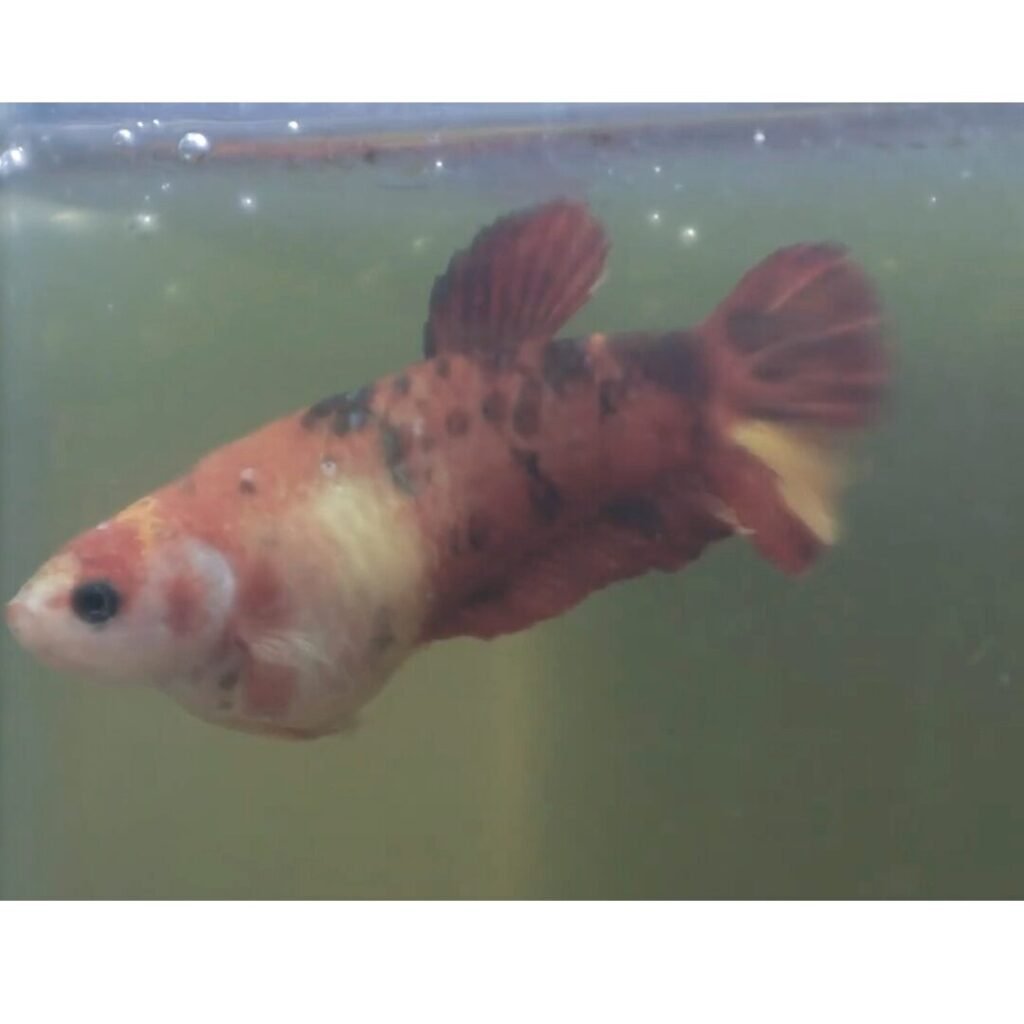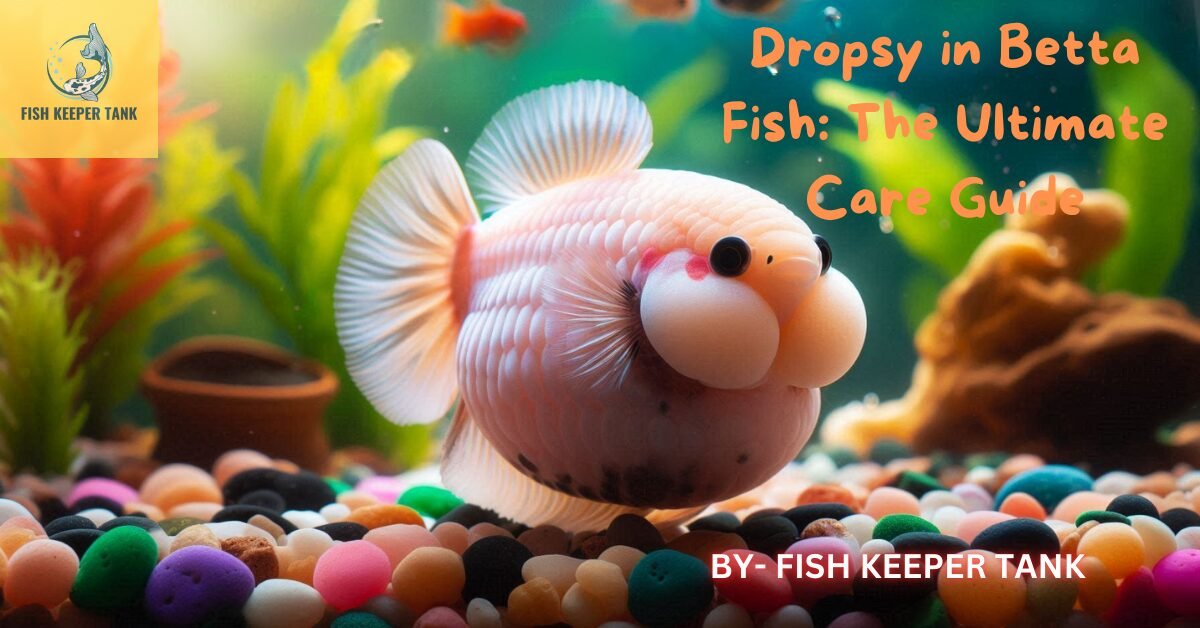Introduction
Dropsy is a serious and often fatal condition that can affect fish and other aquarium inhabitants. Betta Fish, or Siamese Fighting Fish, are known for their attractive colors and unique personalities. Caring for betta fish can be challenging, especially with health issues like Dropsy. This comprehensive guide, “Dropsy in Betta Fish: The Ultimate Care Guide,” will provide detailed information on Dropsy, from recognizing its symptoms to implementing effective treatments as well as preventive measures for this serious condition.
Betta Fish Habitat
Betta fish are native to tropical islands of Southeast Asia, including Thailand, Malaysia, Indonesia, Vietnam, Laos, and Cambodia. In the wild, they live in warm, shallow freshwater bodies with dense vegetation, such as rice paddies, stagnant ponds, marshes, and slow-moving streams. In Captivity, it is essential to create a suitable habitat, which is vital for their health and may prevent the occurrence of Dropsy in Betta Fish.

What is Dropsy?
Dropsy is a form of Edema. It is a medical condition in which excessive fluid accumulates in the body’s tissues, causing swelling. Dropsy itself is not a disease, but it is often a symptom of underlying problems, such as kidney failure, infections, stress, or other illnesses. In fish, it is generally caused by bacterial infections, which may kill the fish if not treated quickly.
Dropsy in Betta Fish
Dropsy in Betta Fish is a relatively uncommon disease compared to constipation and fin rot. Because of their hardy nature and will to survive, betta fish generally do not succumb to diseases easily. However, if it occurs, Dropsy is a serious illness in Betta fish characterized by swelling and bulging caused by fluid accumulation in the body.
Signs and Symptoms of Dropsy in Betta Fish
Dropsy in Betta Fish shows various signs and symptoms, which include:
- Swollen or bloated body and abdomen.
- Raised scales (often referred to as “Pinecone” appearance).
- Bulging eyes, also known as exophthalmos.
- Pale or discolored gills.
- Clamped fins.
- Curved spine.
- Pale and stringy feces/poop.
- Color fading or loss of color.
- Lethargy and decreased activity.
- Loss of appetite.
- Changes in swimming behavior like gasping for air, floating, or sinking.
If you observe these signs and symptoms, addressing them promptly is essential for the best outcome.
Causes of Dropsy in Betta Fish
Environmental Factors:
- Poor water quality with high ammonia, nitrate, or nitrite levels.
- Sudden change in water temperature and pH.
- Overcrowding the fish tank.
- Stress due to overcrowding and sudden environmental changes.
Biological Factors:
- Bacterial infection caused by a gram-negative bacteria called Aeromonas leads to multiple organ failure.
- Other viral or parasitic infections can cause organ failure.
- Overfeeding or a diet lacking essential nutrients can weaken immunity.
Dropsy and Kidney Fail Relation
There is a significant relation between Dropsy and kidney failure in Betta fish. The kidneys help regulate fluid levels in the body. When they fail to perform their function, the water balance is disrupted, and fluid accumulates in the body, leading to the development of Dropsy.
Treatment of Dropsy
Treating Dropsy in Betta fish involves several steps:
- Quarantine The Fish: Place the affected fish in another separate tank to prevent the spread of illness.
- Water Quality Check: Ensure that the water is clean up to the mark and that the parameters are stable. Perform regular water changes.
- Provide Medicine: Depending on the cause, medications such as antibiotics or anti-parasitic treatments can be given.
- Add Epsom Salt: Adding Epsom salt to the tank can help eliminate excess fluids.
- Diet Adjustment: Provide a high-quality, nutritious diet and consider fasting the fish if it refuses food.
- Consult Doctor: It’s better to consult a veterinarian or experienced fish keeper to determine the appropriate treatment and medication.
Dropsy Medication
Appropriate and proper medications are crucial for effectively treating Dropsy in Betta fish. Common options include:
- Antibiotics: These are used to treat bacterial infections; examples include tetracycline, erythromycin, and kanamycin.
- Anti-parasitic medications: If parasites are suspected, consult a veterinarian or fish expert for specific treatments.
- Epsom salt: Use at a dose of 1 teaspoon per gallon of water to help reduce swelling.
- Always follow instructions for dosage carefully and consult with a veterinarian if unsure.
Prevention of Dropsy
Preventing Dropsy in Betta fish is primarily centered on maintaining a healthy environment for the Betta fish:
- Practice regular water changes of the Betta fish tank. Change 10 to 15% of the water weekly.
- Maintain a well-balanced diet for your betta fish and choose high-quality food with proper feeding. Avoid overfeeding your Betta fish.
- Make sure your Betta fish stay stress-free. Minimize changes in the tank environment and choose tank mates wisely to prevent aggression.
- Carefully monitor your Betta fish. Observe them regularly for signs of disease.
Is Dropsy Fatal?
While Dropsy itself is not directly fatal, it is often indicative of serious underlying health issues that can lead to death if unaddressed. The mortality rate is high because Dropsy often indicates severe internal damage. However, early intervention and proper care can improve the chances of recovery.
Recovery and Prognosis Time From Dropsy In Betta Fish
Recovery time from Dropsy in Betta Fish mostly depends on the severity of the condition and the treatments applied. Mild cases may get solved in a few days, while severe ones may take weeks. Regular monitoring is essential to track progress.
The prognosis of Dropsy in Betta Fish depends on the severity of the condition and the fish’s overall health. Fish that receive timely and appropriate treatment can recover, while those in the advanced stages might have a worse outcome. Always consult a fish health expert for the best insights based on individual cases.
Dropsy vs Bloating (Ascites) In Betta Fish
While Dropsy and Bloating (ascites) can both cause a swollen belly, there are some key differences to know: It’s essential to differentiate between Dropsy and bloating (ascites):
- Dropsy:
It is characterized by pinecone scales and severe internal swelling due to fluid retention, which is caused by bacterial infection.
- Bloating (Ascites):
It typically involves only the swelling of the abdomen and can often result from overfeeding, constipation, or less severe infections. Bloating can resolve on its own with dietary adjustments.
Betta Fish Care Guide
Excellent Betta fish care can prevent a range of illnesses, including Dropsy. Here’s a quick checklist:
- Provide an excellent spacious tank of at least 5 gallons, with adequate filtration.
- Maintain optimal water conditions, that is, temperature between 75°F to 80°F, pH between 6.5 and 7.5, and ammonia levels at 0.0PPM.
- Feed a well-balanced diet with high-quality food and proper feeding. Avoid overfeeding.
- Maintain a stress-free environment for your betta fish by including plenty of plants and hiding spots.
- Regularly monitor your Betta fish health. Observe their behavior for early detection of issues.

Conclusion
Dropsy in Betta fish is a serious condition that requires immediate attention and care. “Dropsy in Betta Fish: The Ultimate Care Guide,” equips you with all the necessary knowledge you need to care for your vibrant companions. By recognizing the signs, knowing the causes, and implementing effective treatments, you can improve your Betta fish’s chances of recovery and maintain their health. Remember: “A Healthy Betta Is A Happy Betta.”
Frequently Asked Questions
Can Dropsy in Betta fish be cured?
Many Betta fish can recover from Dropsy with prompt treatment and proper care.
What can cause Dropsy in Betta fish?
Poor water quality, infections, and stress are common causes of Dropsy.
Is Epsom salt safe for Betta fish?
Yes, Epsom salt can help relieve swelling when used appropriately.
How can I tell if my Betta fish is stressed?
Signs include lethargy, hiding, changes in eating habits, and aggressive behavior.
How often should I change the water in a Betta fish tank?
It’s recommended that 10 to 15% of the tank water be changed weekly to maintain water quality.
How do I prevent Dropsy in my Betta fish?
Maintain clean water conditions, avoid overfeeding, and keep the new betta fish in a separate tank before adding them to the main tank.
Is Dropsy contagious to other fish?
Dropsy is not contagious, but the underlying bacterial infection can be, so it’s best to isolate affected fish.
What are the early signs of Dropsy?
Early signs include swelling of the abdomen, lethargy, and loss of appetite.
Can stress cause Dropsy in Betta fish?
Stress can negatively affect the immune system of the betta fish, making it more susceptible to infections, leading to Dropsy.
Can a betta fish recover from Dropsy?
While Dropsy can be fatal, some betta fish can recover with early intervention and proper care.
How do you treat Dropsy in a betta fish?
Treatment involves improving water quality, administering appropriate medication, and providing a stress-free environment.
What causes Dropsy in betta fish?
Various factors, including poor water quality, bacterial infections, kidney failure, and parasites, can cause Dropsy.

